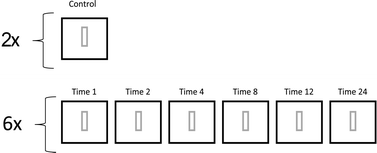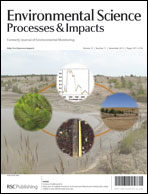Use of semipermeable membrane devices (SPMDs) to characterize dissolved hydrocarbon fractions of both dispersed and undispersed oil†
Abstract
Crude oil contamination remains a problem along coastal California and its impacts on pelagic organisms are of concern. Previous crude and dispersed oil studies showed a decrease in fish toxicity when Corexit 9500 dispersant was applied. However, observed sublethal metabolic effects were similar for both oil conditions, suggesting fish were accumulating similar dissolved hydrocarbons. This study aimed to characterize the bioavailable fraction of the water-accommodated fraction (WAF) and the chemically-enhanced WAF (CEWAF) of Prudhoe Bay Crude Oil (PBCO), using semi-permeable membrane devices (SPMDs) as fish models. Seven accumulated PAHs were identified (naphthalene, 2-methylnaphthalene, 1-methylnapthalene, biphenyl, fluorene, dibenzothiophene and phenanthrene) from 24 h static exposures. Although WAF and CEWAF oil loadings differed by eight-fold, accumulated dissolved concentrations among the seven PAHs differed by some three-fold. Overall, the use of SPMDs in characterizing the dissolved fraction of PBCO, has provided a better understanding of the bioavailability of crude and dispersed oil.


 Please wait while we load your content...
Please wait while we load your content...